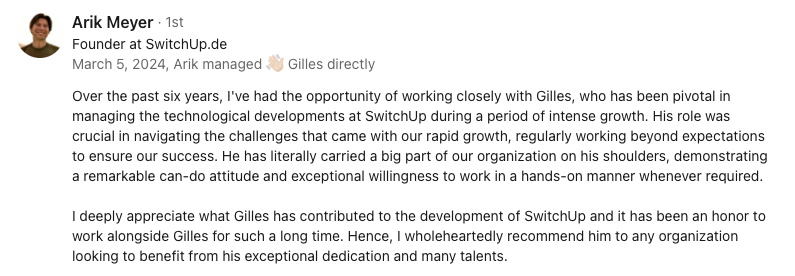Abstract:
Reinforcement Learning (RL) is a subset of machine learning where agents learn from past actions to refine strategies and achieve goals. Deep Reinforcement Learning (DRL) combines deep learning with RL to handle complex decision-making processes, making it suitable for high-dimensional inputs and tasks requiring intricate decision-making. RL optimization involves fine-tuning hyperparameters and managing exploration-exploitation trade-offs. Technology and engineering leaders can leverage RL, DRL, and optimization techniques to drive innovation and improve business outcomes by fostering cross-functional collaboration, investing in education and training, establishing guidelines, and promoting a culture of experimentation within their organizations.
Reinforcement Learning, Deep Reinforcement Learning, and RL Optimization: A New Era of Machine Learning Algorithms for Technology and Engineering LeadersReinforcement Learning and Next-Generation Algorithms: Transforming Technology Landscapes
Reinforcement Learning (RL) is a crucial subset of machine learning, focusing on how agents ought to take actions in an environment to achieve a goal. The agent learns from its past actions, continuously refining its strategies through trial and error. RL has garnered significant attention from technology and engineering leaders due to its potential to revolutionize various sectors, including gaming, robotics, finance, and healthcare. By enabling AI agents to learn from interactions and adapt their behaviors, RL has paved the way for next-generation algorithms that can tackle complex real-world problems.
Deep Reinforcement Learning (DRL) is an advanced subfield of RL that combines deep learning and RL techniques to handle high-dimensional inputs and complex decision-making processes. With DRL, reinforcement learning models can process raw data, such as images or videos, and extract meaningful features without relying on handcrafted representations. This capability has led to groundbreaking achievements, such as AlphaGo's mastery of the ancient game of Go, which demonstrated the potential of DRL to surpass human expertise in intricate decision-making tasks.
Optimization plays a critical role in reinforcing learning and its next-generation algorithms. RL optimization typically entails fine-tuning hyperparameters, managing exploration-exploitation trade-offs, and ensuring the stability of learning processes. RL optimization techniques often employ advanced mathematical approaches, like gradient-based methods, meta-learning, and evolutionary algorithms. These optimization methods help technology and engineering teams to develop smarter, more efficient, and adaptive AI systems by enabling them to learn more quickly and generalize better to new situations.
Chief Technology Officers, Directors of Technologies, and Directors of Engineering: Navigating Reinforcement Learning and AI Advancements
As technology and engineering leaders, such as Chief Technology Officers (CTOs), Directors of Technologies, and Directors of Engineering, navigating the evolving landscape of reinforcement learning and AI advancements is critical to staying competitive and driving innovation. Understanding the potential applications, limitations, and best practices for RL and DRL will enable these key stakeholders to make informed decisions when investing in AI-driven projects, adopting new tools, and scaling AI systems. Leveraging RL, DRL, and optimization techniques can lead to improved decision-making, enhanced automation, and better overall business outcomes.
Successfully integrating reinforcement learning and its next-generation algorithms within technology and engineering teams requires a strategic approach. CTOs, Directors of Technologies, and Directors of Engineering should:
- Promote cross-functional collaboration: Encourage interdisciplinary collaboration between data scientists, AI researchers, and domain experts to ensure that RL and DRL applications align with business objectives and are grounded in practical domain knowledge.
- Invest in education and training: Provide opportunities for team members to learn about RL, DRL, and optimization techniques by organizing workshops, training sessions, and conferences. This investment will empower teams to develop and implement AI-driven solutions effectively.
- Establish guidelines and best practices: Develop internal policies and procedures that address ethical considerations, data privacy, and security in RL and DRL applications. This ensures that AI systems are implemented responsibly and adhere to regulatory requirements.
- Foster a culture of experimentation: Encourage teams to experiment with various RL and DRL techniques, enabling them to identify the most effective approaches for specific use cases. This approach nurtures a culture of innovation and continuous learning within the organization.
Reinforcement Learning, Deep Reinforcement Learning, and RL Optimization are at the forefront of machine learning algorithms, shaping the future of technology and engineering. By understanding the nuances of these advanced techniques and strategically integrating them into their organizations, CTOs, Directors of Technologies, and Directors of Engineering can drive innovation, improve decision-making, and ultimately achieve better business outcomes.
You might be interested by these articles:
- Unveiling AI: A Guide to Explainable Machine Learning
- Demystifying Machine Learning Techniques
- Thriving Amid Constraints: Creative Strategies for Tech Startups in Machine Learning





